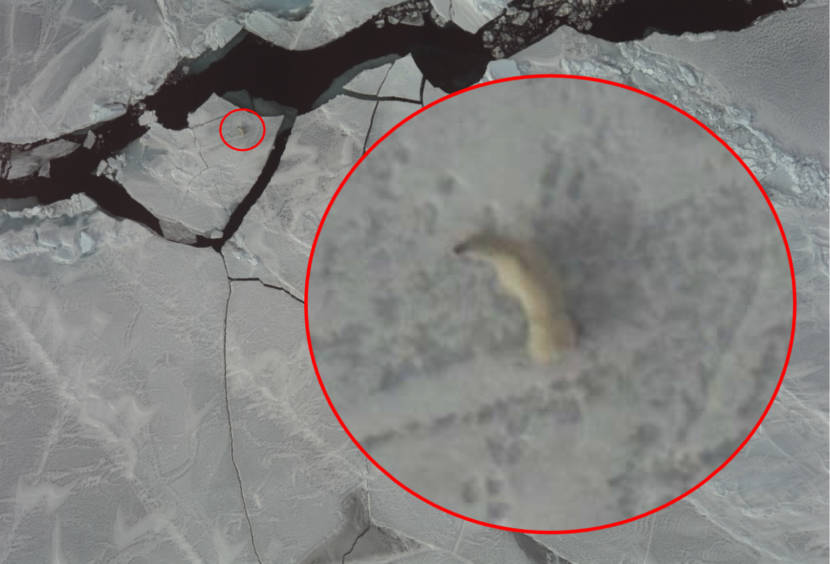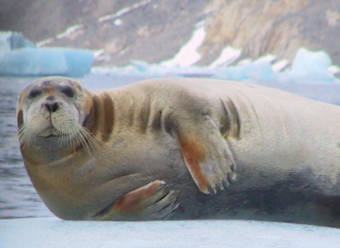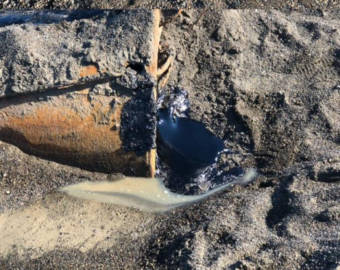
Sea ice in the Arctic serves as a habitat for polar bears and their prey, ice seals. The ice doesn’t follow international boundaries, and monitoring the migration of these species requires access to both American and Russian waters.
A collaboration between scientists from both countries is providing a clearer picture of the species, which remain subsistence staples to Arctic communities.
Irina Trukhanova is a wildlife biologist with North Pacific Wildlife Consulting. The group contracts with the National Oceanic and Atmospheric Administration and U.S. Fish and Wildlife Service.
She says that polar bears and ice seals are loosely spread out across the vast Arctic, and it can be difficult to keep track of their movements and populations.
“The only time that you can actually look at those species in their natural habitat is springtime,” Trukhanova said.
That’s when the species travel on the sea ice in the Chukchi Sea.
However, U.S. researchers are normally restricted to U.S. boundaries. Researcher Paul Conn with NOAA says that the process can be limiting since the polar bears travel between sea ice in both Russia and the United States.
“The only ones that they collar are the ones that end up over near Kotzebue, so that is a knowledge gap,” Conn said.

In order to survey polar bears and ice seals across the entire Chukchi Sea, U.S. researchers with NOAA and Fish and Wildlife partnered with Russian scientists. The result was a 2016 aerial survey that observed the species populations and movements.
Using a combination of infrared technology with photography and visual observations, the researchers were able to track the distribution and abundance of the seals and polar bears. Conn says the results from the research give a more complete view of the mammals in the wider Arctic.
“It does give us a sense for where bears are in the spring in April, and having done surveys for seals at the same, we can see how important the distribution of prey is for the distribution of bears,” Conn said.
Moving forward, Trukhanova says that global warming will necessitate continuous research, as the Arctic warms faster than any other part of the world. That has led to diminishing sea ice for polar bears, and the ice seals they prey on.
“If it melts earlier, if the ice cover isn’t stable enough, then the survival rates for the pups, specifically for the ringed seal pups, become lower,” Trukhanova said.
The Alaska Nannut Co-Management Council, an organization of tribes that subsist on polar bears, praised the collaboration. In a statement, Nannut Executive Director Katya Gray said “… this effort is significant for its use of non-invasive methods to study polar bears, the importance of which our tribes and hunters are consistently raising.”
Trukhanova, who grew up in Russia and attended the University of St. Petersburg, said the data could not have been collected without collaboration.
“We were working together,” Trukhanova said. “We were planning the survey together, trying to make the methods compatible and make the results compatible so we could join forces and bring all the data to the table and get the robust joint results that we could use on both sides of the border.”
While the governments of both countries have had a sometimes tense relationship in recent years, Conn says he was impressed with the scientific community’s good-natured approach.
“You hear about Russia and us, and this antagonistic relationship, but when you actually get to the people it’s just amazing the amount of love they have for their science,” Conn said.
Results from the joint survey on polar bears and ice seals were published in the scientific journal PLOS One, part of the open-access Public Library on Science.



